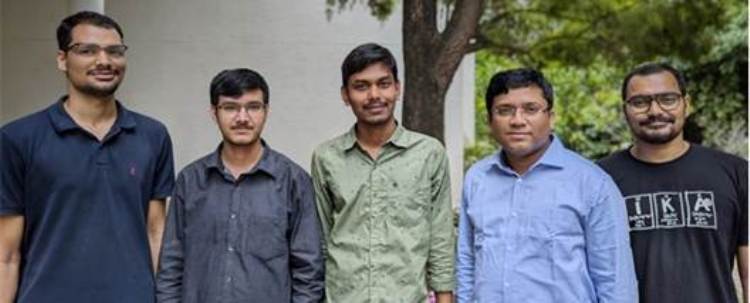Magnetic-Stress demonstrated as driving force behind metal-insulator transition
The team led by Prof. Bivas Saha has experimentally demonstrated the presence of magnetic stress as a driving force behind the metal-insulator transition in CrN and illuminated pathways for its manipulation.

- Country:
- India
The mystery behind the peculiar metal-insulator transition exhibited by certain materials under external stimuli such as temperature, pressure, electric fields has been decoded by scientists, paving the way towards designing functional materials and devices like sensors and actuators.
Materials primarily exist in one of the two fundamental electronic states: metallic or insulating. However, certain materials exhibit the remarkable ability to transition between these two states under external stimuli such as temperature, pressure, electric fields, and more. Since the initial discovery of this phenomenon in magnetite in 1939, the transition between the metal-insulator phases (MIT) has continued to captivate generations of scientists and engineers. Their foray into this area has offered critical scientific insights and applications in various devices and at the same time brought in the necessity of new materials that can exhibit metal-insulator phase transition for industrial applications.
Chromium nitride (CrN) is an example of such a material, wherein the metal-insulator transition is anticipated to be instigated by an unconventional force arising from the anisotropic magnetic stress. However, the mechanism remained experimentally unverified even with the theoretical prediction for nearly two decades.
A team from the Jawaharlal Nehru Centre for Advanced Scientific Research (JNCASR) an autonomous institute of the Department of Science and Technology (DST) has experimentally demonstrated that magnetic stress that stems from the peculiar arrangement of atomic spin drives the simultaneous structural, magnetic, and metal-insulator transition.
The team led by Prof. Bivas Saha has experimentally demonstrated the presence of magnetic stress as a driving force behind the metal-insulator transition in CrN and illuminated pathways for its manipulation.
The magnetic stress within CrN emerges from the interplay between two distinct magnetic orderings along mutually perpendicular directions directly tied to the magnetic exchange interaction between two neighboring Cr atoms. The team employed a technique that involves altering the equilibrium atomic spacing within CrN ultrathin films, to fine-tune the magnetic exchange interactions (epitaxial strain engineering).
When subjected to compressive strain, the magnetic stress increases, resulting in metal-insulator transition at elevated temperatures compared to bulk values. Conversely, when the film is under tensile stress, the magnetic stress diminishes, prompting a metal-insulator transition at a significantly lower temperature than the bulk value.
The structural symmetry also changes from rocksalt at high temperatures to orthorhombic at low temperatures simultaneously. Their observation published in journal Phys. Rev. Lett affirms the pivotal role of magnetic stress in the metal-insulator transition of CrN.
“We perceive this as a paradigm shift in the domain of metal-insulator transitions, introducing magnetic stress as a novel driving force alongside the well-established driving forces such as Coulomb repulsion and localization effects. Furthermore, we anticipate this discovery will expand the scope of investigating metal-insulator transition phenomena by identifying new materials with substantial magnetic stress” Prof. Bivas Saha, Associate Professor at the International Centre for Materials Science in JNCASR explained.
Scientists from IISER Thiruvananthapuram, University of Sydney, Australia, Deutsches Elektronen-Synchrotron (DESY), Germany and University of Cambridge, UK also participated in this work.
The new mechanism of metal-insulator phase transition can lead to better understanding on how spin, charge and lattice degrees of freedom are coupled in materials and will also result in new classes of materials that exhibit metal-insulator phase transition.
(With Inputs from PIB)










